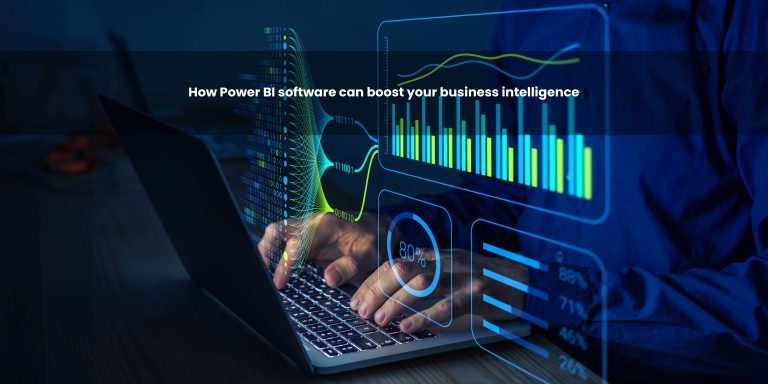Businesses increasingly rely on data to inform their decisions in the rapidly changing digital ecosystem of today. The key to turning unstructured data into insightful knowledge is Power BI data sources. Organizations can easily access and view their data, regardless of where it comes from, by integrating many data sources into a one interactive platform with Power BI.
We’ll look at the different data sources that Power BI can connect to in this blog and how they can help you get the most out of your business information.
What is it?
Power BI data sources refer to the different origins of data that Power BI can connect to for analysis. These can be databases, cloud services, local files, and even real-time data streams. Power BI’s ability to connect to a wide variety of data sources is what makes it one of the most powerful business intelligence tools available. From Excel files to cloud-based services like Azure and Google Analytics, Power BI can integrate all your data into one comprehensive report.
Common Power BI data sources
Cloud-based data sources
Cloud platforms are one of the most widely used data sources for Power BI. Services like Microsoft Azure, Salesforce and Google Analytics provide seamless connectivity to the Power BI platform. Power BI’s built-in connectors allow businesses to easily pull data from these services into their dashboards and reports, enabling real-time insights for better decision-making. Learn more about integrating Power BI with Azure.
Database connections
Power BI integrates with numerous database management systems, including SQL Server, MySQL and Oracle. By connecting to these databases, Power BI allows users to directly access large datasets and perform advanced analytics. This connection simplifies the process of extracting and transforming data without needing to export or manipulate the information manually.
Excel and CSV files
Many organizations still rely on Excel or CSV files for storing their data. Power BI makes it incredibly easy to import and analyze data from these familiar file formats. With the help of the Power BI Desktop tool, users can upload Excel spreadsheets or CSV files and instantly create reports and dashboards.
Web-based data sources
Power BI also connects with data stored on the web. Whether it’s an API from an external service or a live data feed from a website, Power BI can consume web data through its Web Connector. This allows businesses to track online performance, sales metrics, and other relevant KPIs.
Power BI dataflows
Power BI Dataflows allow you to manage and transform your data in the cloud before it even enters Power BI. By connecting to various data sources like SharePoint, Salesforce, and Google BigQuery, Power BI Dataflows centralize your data preparation processes and enhance reporting consistency.
DirectQuery and live connections
Sometimes, businesses need to work with large volumes of data that require real-time updates. Power BI’s DirectQuery and Live Connection features allow users to access live data from sources like SQL databases and Azure Synapse Analytics. This real-time integration ensures that businesses can make decisions based on the most current data available.
How Power BI Data Sources Improve Business Intelligence
Integrating diverse Power BI data sources is not only about collecting information; it’s about unlocking insights. By merging multiple data streams into a unified dashboard, businesses gain a 360-degree view of their operations, from finance to marketing. This powerful integration helps businesses
Improve data quality
By integrating data from trusted sources, Power BI ensures that decision-makers are working with accurate and up-to-date information. This leads to more informed business decisions.
Enable real-time insights
Real-time data access is essential for businesses that need to act quickly. Whether you’re tracking sales, website traffic, or customer sentiment, Power BI’s integration with live data sources keeps you on top of your business performance.
Foster collaboration
With all data centralized on Power BI, stakeholders across different departments can access the same reports and insights. This promotes collaboration and alignment across teams, ensuring everyone works from a single source of truth.
Enhance predictive analytics
Power BI integrates with advanced analytics tools, including R and Python, to build predictive models that forecast trends and potential business outcomes. By bringing together different data sources, these models become more accurate and reliable.
Best practices
To maximize the impact of Power BI, it’s important to consider the following best practices
- Optimize data models – When working with large datasets, it’s crucial to optimize your Power BI data models. This means cleaning and transforming data, removing unnecessary fields, and ensuring relationships between tables are correctly defined.
- Use scheduled refreshes – Set up scheduled data refreshes to ensure that your reports are always up to date with the latest data. This is particularly useful for reports that rely on cloud-based data sources or databases that change frequently.
- Leverage custom connectors – If you have unique data sources, Power BI allows you to create custom connectors. This feature helps integrate proprietary systems into your analytics pipeline.
- Focus on data security – Always prioritize the security of your data, especially when working with sensitive information. Power BI provides role-based security and other encryption features to ensure that only authorized users can access specific datasets.
Conclusion
Incorporating diverse Power BI data sources into your analytics strategy is a game-changer for any organization. With seamless data integration, real-time insights, and powerful reporting capabilities, Power BI empowers businesses to make data-driven decisions faster and more effectively than ever before.
By leveraging these data sources, businesses not only improve operational efficiency but also gain a competitive edge in their industries. To learn more about how Power BI can transform your data analytics, visit the official Power BI website.
Check out the related blogs for further reading

How to optimize costs with Microsoft dynamics 365 pricing plans
Microsoft Dynamics 365 pricing can be complex, but with the right approach, businesses can control costs while maximizing…

Dynamics 365 pricing and licensing – what you need to know
Microsoft Dynamics 365 is a cloud-based suite of business applications designed to help organizations manage operations efficiently. It…

Dynamics 365 Fraud protection – key features and benefits for businesses
Fraud is a growing concern for businesses, significantly impacting revenue, security, and customer trust. As digital transactions continue…








